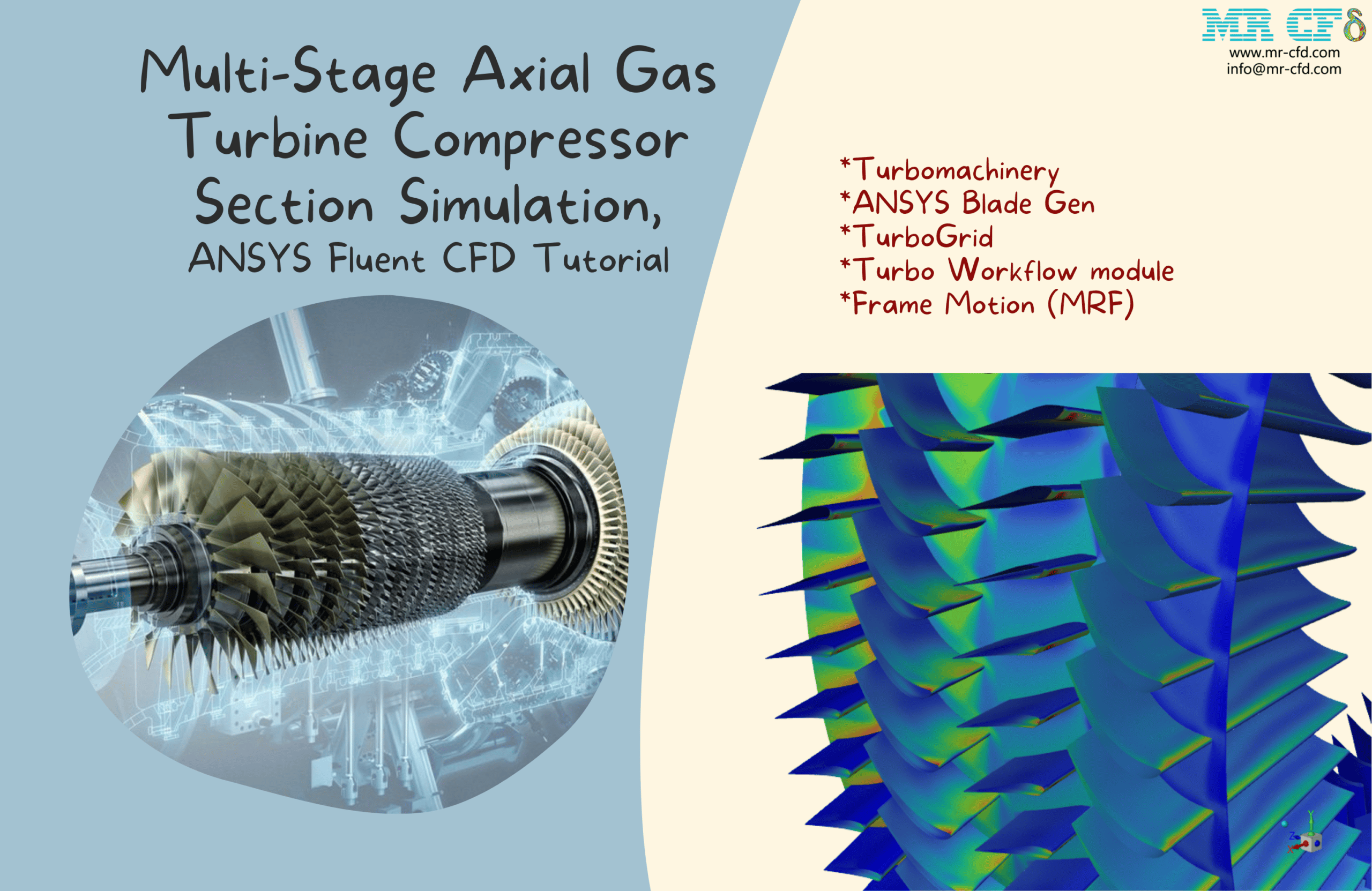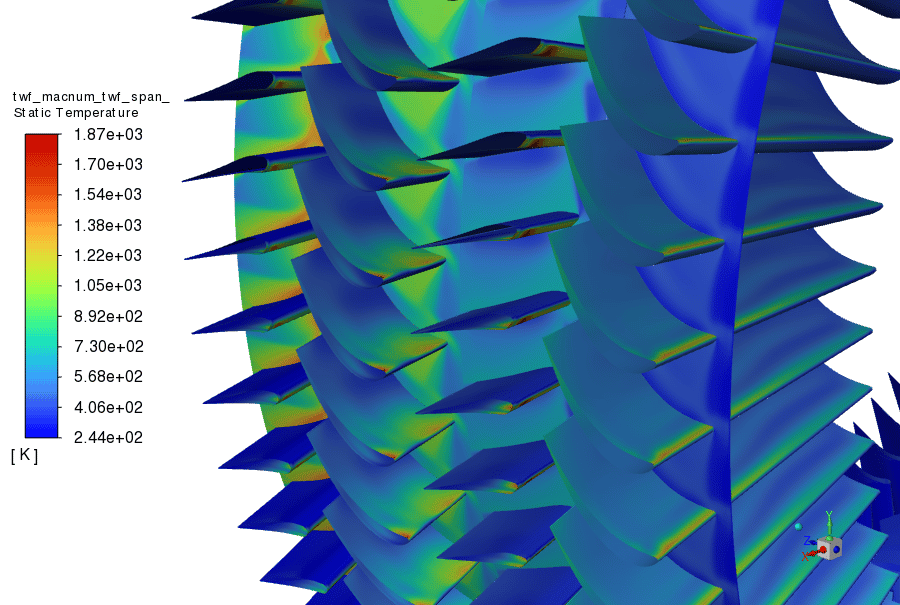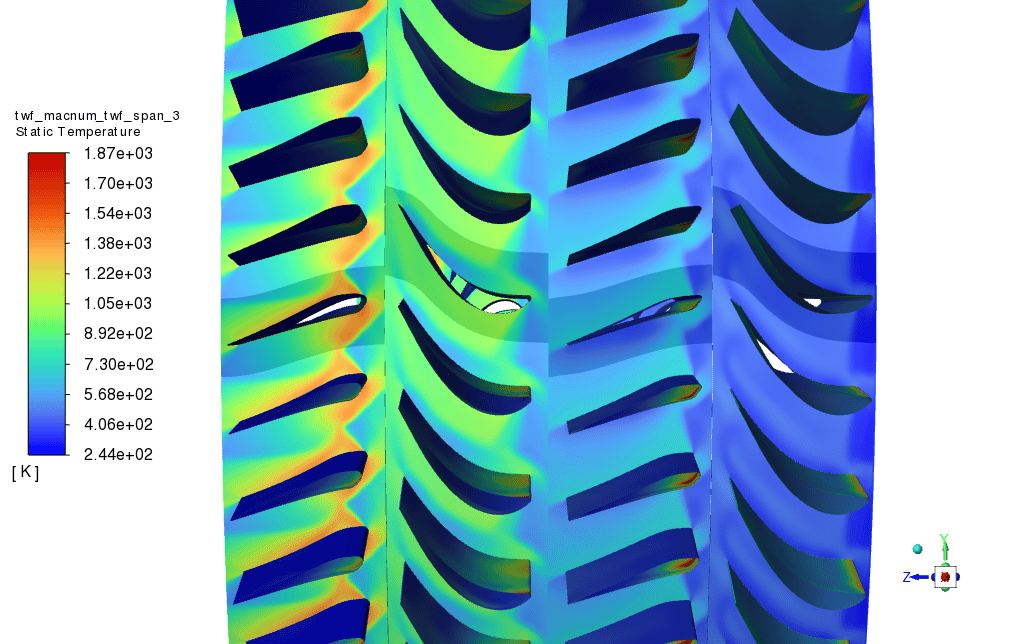Multi-Stage Axial Compressor CFD Simulation
$120.00 $60.00 Student Discount
- The problem numerically simulates a Multi-Stage Axial Compressor using ANSYS Fluent software.
- We design the 3-D model with the ANSYS Blade Gen.
- The meshing of the present model has been generated by TurboGrid software and the total cell number is 11,430 elements.
- The compressor motion has been modeled with the MRF method.
- The Turbo Workflow module was used to model the Compressor.
To Order Your Project or benefit from a CFD consultation, contact our experts via email (info@mr-cfd.com), online support tab, or WhatsApp at +44 7443 197273.
There are some Free Products to check our service quality.
If you want the training video in another language instead of English, ask it via info@mr-cfd.com after you buy the product.
Description
Multi-Stage Axial Gas Turbine Compressor Section Simulation, ANSYS Fluent CFD Tutorial
Description
An axial compressor is a gas compressor that can continuously pressurize gases. It is a rotating, airfoil-based compressor in which the gas or working fluid principally flows parallel to the axis of rotation, or axially. Axial compressors consist of rotating and stationary components. A shaft drives a central drum which is retained by bearings inside a stationary tubular casing.
Between the drum and the casing are rows of airfoils, each row connected to either the drum or the casing in an alternating manner. A pair of one row of rotating airfoils and the next row of stationary airfoils is called a stage. The rotating airfoils, also known as blades or rotors, accelerate the fluid in both the axial and circumferential directions.
The stationary airfoils, also known as vanes or stators, convert the increased kinetic energy into static pressure through diffusion and redirect the flow direction of the fluid to prepare it for the rotor blades of the next stage. The cross-sectional area between the rotor drum and casing is reduced in the flow direction to maintain an optimum Mach number axial velocity as the fluid is compressed.
In this case, the compressor was modeled as 4 stages (2 rotors, 2 stators) with a 120 blade in each stage to observe a high-performance and high-pressure compressor in its working condition.
The present model in the 3-D domain of this simulation has been designed in ANSYS Blade Gen The domain contains a mass flow inlet and pressure outlet.
The meshing of this present model has been generated by TurboGrid software. The mesh grid is unstructured; the total cell number is 11,430 elements.
Methodology: Multi-Stage Axial Compressor CFD Simulation
In this simulation, the pressure-based solver has been used. For modeling turbulence, the k-omega SST model was used, which simulates the compressor at the operational point with a mass flow rate of 110 kg/s.
The compressor motion has been modeled with the MRF method, each stage rotates at the speed of 10000 rpm. Also, the Turbo Workflow module was used to model the Compressor.
Conclusion
In the simulation results, according to the Mach number contour, it is clear how to flow speed changes through passages and drops in each stage, and according to the pressure counter, the pressure rises after each stage to give the system a P-ratio of 4.
The speed triangles created because of rotating rotors are visible and the pressure contour on the blades are showing that how the flow stagnated and also separated through the system. The efficiency for the system is calculated by using a software workflow scheme and resulted in a value of 20% for the compressor, the pressure drop caused by this number is also visible in the pressure contour.










Reviews
There are no reviews yet.